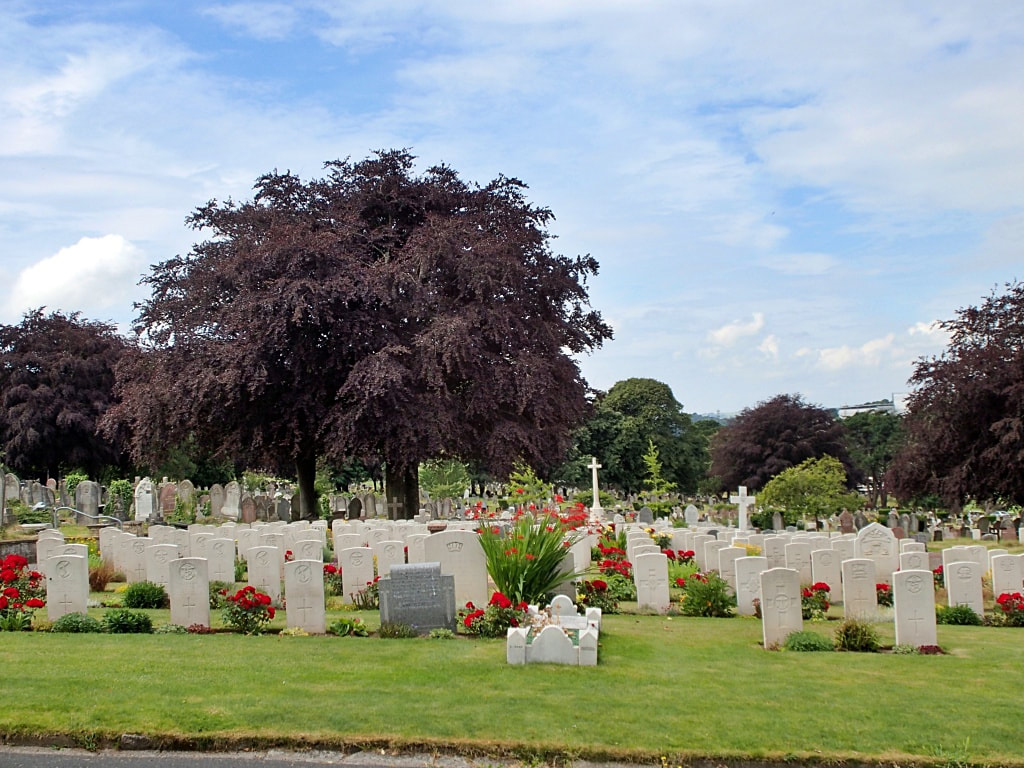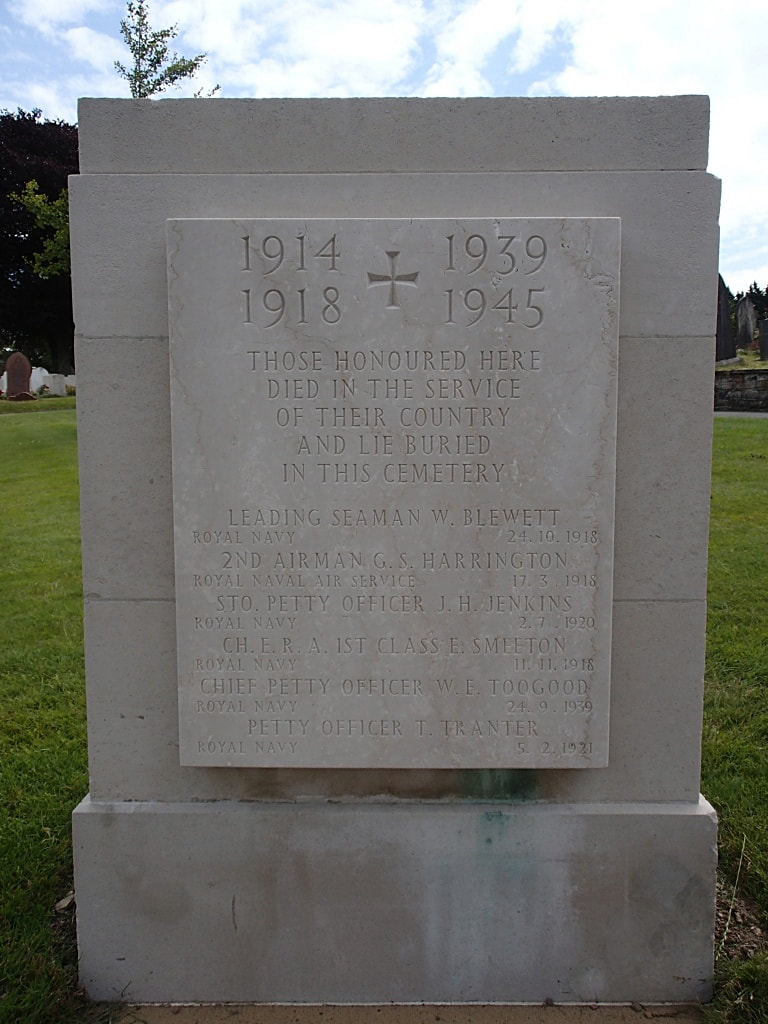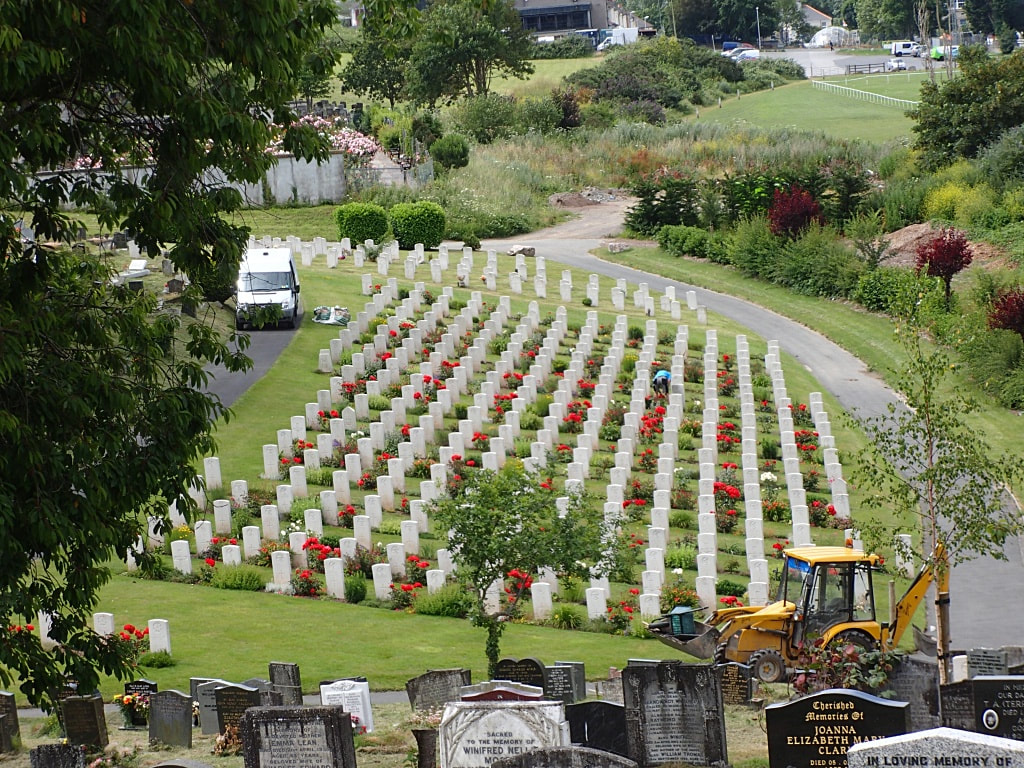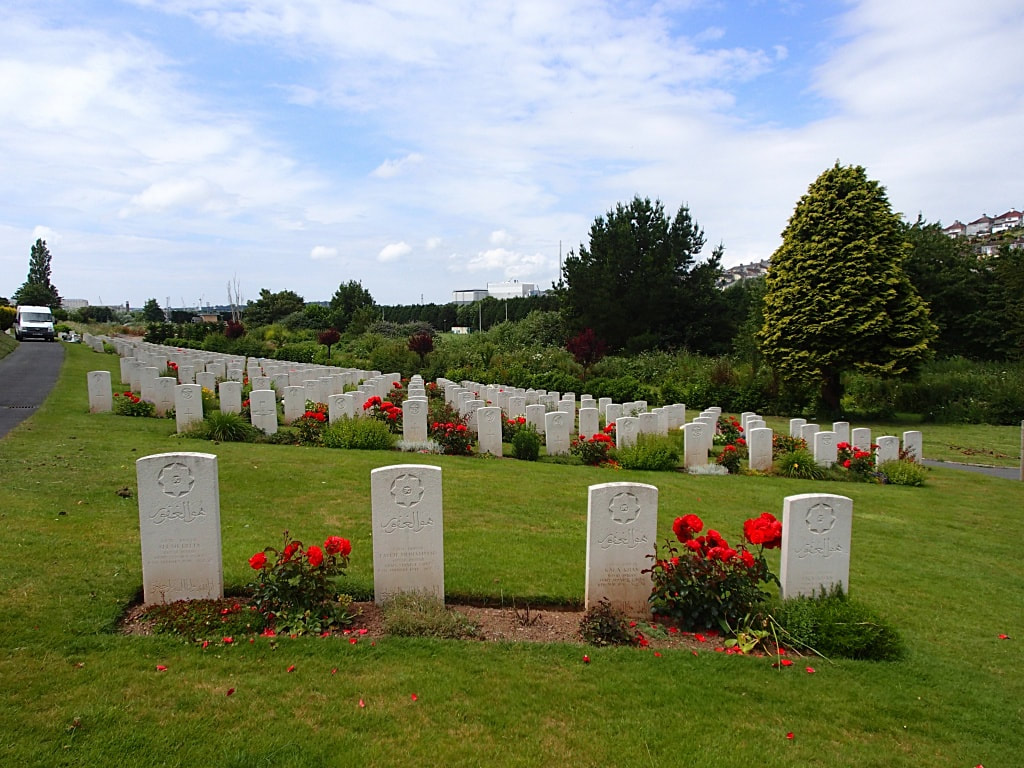PLYMOUTH (WESTON MILL) CEMETERY
Devon
England
GPS Coordinates: Latitude: 50.39601, Longitude: -4.16887
Location Information
Weston Mill Cemetery is located to the North of the City Centre off Ferndale Road.
Visiting Information
The cemetery is open daily to pedestrians from 0900 to 1600. Vehicles can access the site from 0900 to 1600 on week days and from 1100 to 1500 at weekends.
Historical Information
During the First World War, Plymouth, Devonport and Stonehouse contained between them the Royal Dockyard, Royal Naval Barracks (known as H.M.S. Vivid), the Royal Marine Barracks of the Plymouth Division, and naval and military hospitals. For the duration of the war, Devonport was made headquarters of the Auxiliary Patrol Area.
Plymouth was a naval station second only to Portsmouth during the Second World War. Devonport was also an important military station and there was a R.A.F station at Mount Batten, opposite Plymouth.
Plymouth (Weston Mill) Cemetery contains 401 burials of the First World War, 1 being unidentified. Approximately half are in the naval and military war graves plots north-east of the chapel, the rest are scattered.
Second World War burials in the cemetery number 556, 11 of which are unidentified. Of these, 111 of the earlier graves filled the existing naval and military plots. A further plot was then set aside for service graves and 317 of the burials were made there. The rest of the war graves are scattered. The Commission also maintains 178 non-war service burials (on behalf of the MOD) and 36 war graves of other nationalities, 25 of them Polish.
Total Commission Burials: 1,180.
World War One Identified Casualties: United Kingdom 388, Australia 5, Canada 4, Belgium 3, New Zealand 3, Germany 2, Portugal 2. Total 407.
World War Two Identified Casualties: United Kingdom 523, Poland 25, Canada 14, India 4, Netherlands 4, New Zealand 3, Australia 1. Total 574.
Weston Mill Cemetery is located to the North of the City Centre off Ferndale Road.
Visiting Information
The cemetery is open daily to pedestrians from 0900 to 1600. Vehicles can access the site from 0900 to 1600 on week days and from 1100 to 1500 at weekends.
Historical Information
During the First World War, Plymouth, Devonport and Stonehouse contained between them the Royal Dockyard, Royal Naval Barracks (known as H.M.S. Vivid), the Royal Marine Barracks of the Plymouth Division, and naval and military hospitals. For the duration of the war, Devonport was made headquarters of the Auxiliary Patrol Area.
Plymouth was a naval station second only to Portsmouth during the Second World War. Devonport was also an important military station and there was a R.A.F station at Mount Batten, opposite Plymouth.
Plymouth (Weston Mill) Cemetery contains 401 burials of the First World War, 1 being unidentified. Approximately half are in the naval and military war graves plots north-east of the chapel, the rest are scattered.
Second World War burials in the cemetery number 556, 11 of which are unidentified. Of these, 111 of the earlier graves filled the existing naval and military plots. A further plot was then set aside for service graves and 317 of the burials were made there. The rest of the war graves are scattered. The Commission also maintains 178 non-war service burials (on behalf of the MOD) and 36 war graves of other nationalities, 25 of them Polish.
Total Commission Burials: 1,180.
World War One Identified Casualties: United Kingdom 388, Australia 5, Canada 4, Belgium 3, New Zealand 3, Germany 2, Portugal 2. Total 407.
World War Two Identified Casualties: United Kingdom 523, Poland 25, Canada 14, India 4, Netherlands 4, New Zealand 3, Australia 1. Total 574.










